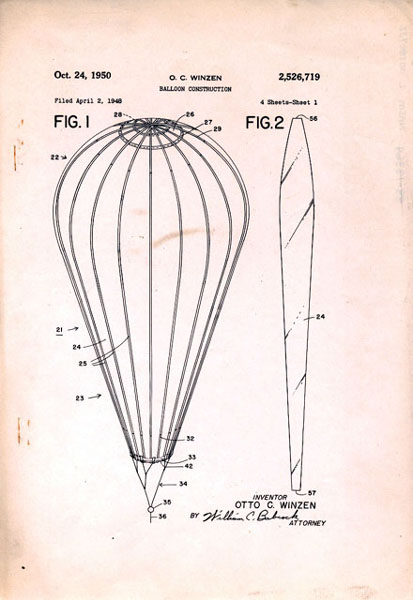|
|
Otto C. Winzen was an innovator and
a visionary who is best known for introducing new balloon materials and construction
methods. He emigrated to the United States from Germany in 1937 and spent World
War II in a series of internment camps. He studied aeronautical engineering
at the University of Detroit, where he met his wife, Vera Habrecht. After the
war, he became involved with the rebirth of high-altitude ballooning and paired
up with Jean Piccard at General Mills.
Winzen pioneered the use of polyethylene
resin for plastic balloons. Produced from ethylene, a petroleum derivative,
the polyethylene was light, relatively cheap, and unaffected by ultraviolet
radiation. Winzen convinced his manufacturing sources to find ways to make the
plastics thinner and thinner until his balloons were thinner than human hair.
|
|
Winzen left General Mills in 1949
to found Winzen Research, Inc., with the help of his wife, Vera, who played
a key role as vice-president and chief of production. In the 1950s, Winzen sold
plastic balloons to the Navy on Project Helios, Skyhook, and Strato-Lab. He
also sold plastic balloons to the Air Force on a secret reconnaissance mission
to overfly Russia called Moby Dick.
Winzen Research did well for itself
in the 1960s. But after moving the manufacturing plant to Texas and selling
off chunks of Winzen Research to his employees, Winzen started losing control.
No longer looked to for advice and unhappy in a second marriage, depression
set in. In 1976 at the age of 58, the great innovator of the plastic balloon
revolution committed suicide.
|

Diagram of a Winzen balloon.
|



